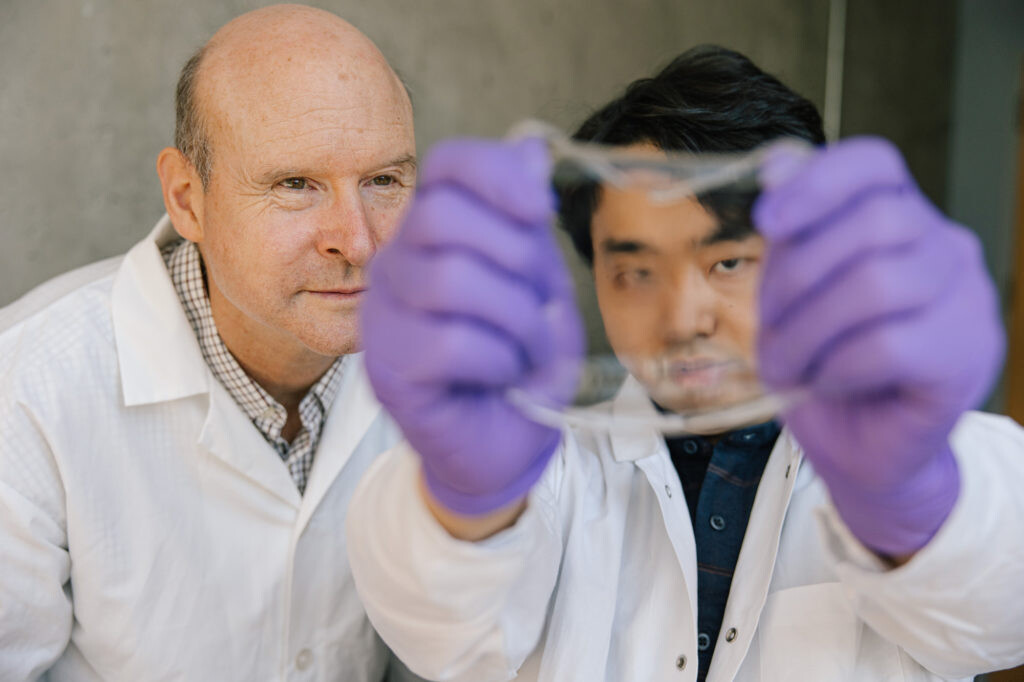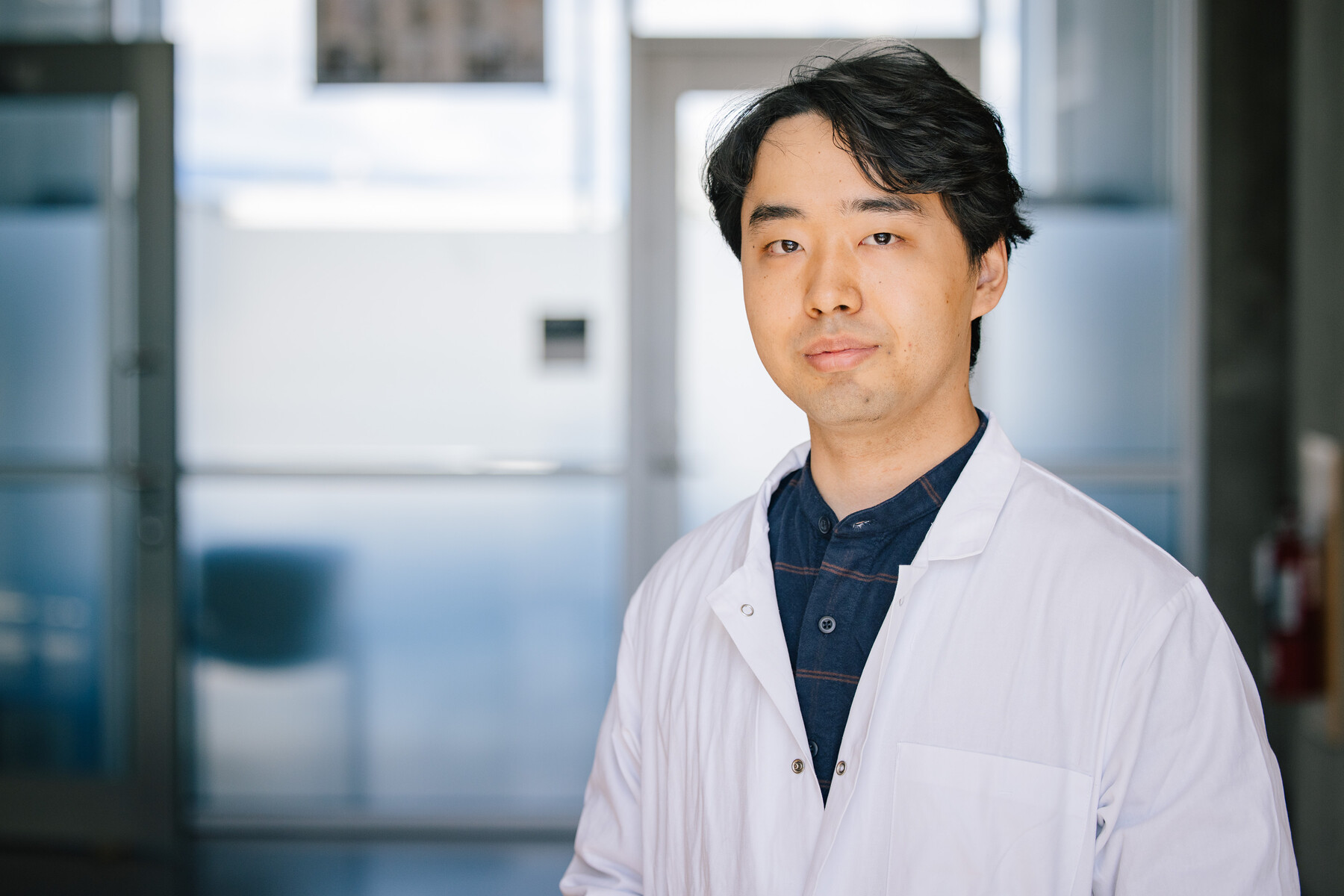Mobile Menu
- Education
- Research
-
Students
- High School Outreach
- Undergraduate & Beyond: Community of Support
- Current Students
- Faculty & Staff
- Alumni
- News & Events
- Giving
- About

Scientists at the University of British Columbia and the University of Toronto have shown how flexible polymers called hydrogels generate ionic electrical charges under pressure, opening new lines of research into smart skin and other biocompatible materials.
The journal Science published the findings today.
Hydrogels are soft and supple, and could offer a more wearable alternative to electronic artificial skins, which incorporate bendable but harder plastics and metals. The gels create ionic currents — detectable by nerves — that convey sensory information through the movement of ions, whereas electronic skins rely on electrons.
“Hydrogel sensors produce voltages and currents in reaction to stimuli, such as pressure or touch — what we are calling a piezoionic effect. But we didn’t know exactly how these voltages are produced,” said Yuta Dobashi, the first author on the paper who is a fourth-year doctoral student at the Institute of Medical Sciencein U of T’s Temerty Faculty of Medicine.
Dobashi is supervised by Victor Yang, a professor of surgery at U of T, but he began the research as a master’s student in biomedical engineering at UBC with John Madden, principal investigator on the study who is a professor of electrical and computer engineering in UBC’s Faculty of Applied Science.
In Madden’s lab, Dobashi devised hydrogel sensors containing salts with positive and negative ions of different sizes. He and collaborators in UBC’s physics and chemistry departments applied magnetic fields to track precisely how the ions moved when pressure was applied to the sensors.
“Pressure spreads out the ions in the liquid at different speeds, creating an electrical signal,” Dobashi said. “Positive ions, which tend to be smaller, move faster than larger, negative ions. This results in an uneven ion distribution that creates an electric field, which is what makes a piezoionic sensor work.”
The researchers say this new knowledge confirms that hydrogels work in a similar way to how humans detect pressure, which is also through moving ions in response to pressure, suggesting potential applications for ionic skins.

“The obvious application is creating sensors that interact directly with cells and the nervous system, since the voltages, currents and response times are like those across cell membranes,” said Madden. “When we connect our sensor to a nerve, it produces a signal in the nerve. The nerve, in turn, activates muscle contraction.”
Madden said it’s possible to imagine a prosthetic arm covered in an ionic skin. The skin would sense an object through touch or pressure, convey that information through the nerves to the brain, and the brain would then activate the motors required to lift or hold the object.
“With further development of the sensor skin and connections with nerves, this bionic interface is conceivable,” Madden said.
Another potential application is a soft hydrogel sensor worn on the skin that can monitor a patient’s vital signs while being unobtrusive and generating its own power. Dobashi, who is now working on hydrogel-based endovascular implants with Yang at U of T, is keen to continue working on ionic technologies.
“We can imagine a future where jelly-like iontronics are used for body implants,” Dobashi said. “Artificial joints can be implanted, without fear of rejection inside the human body. Ionic devices can be used as part of artificial knee cartilage, adding a smart sensing element.”
Another example Dobashi said, would be an arterial piezoionic gel implant that might release drugs based on how much blood pressure it senses, akin to our own blood vessels releasing pressure regulating factors.
The future of iontronics looks promising, said Yang, who is also a neurosurgeon and senior scientist at Sunnybrook Health Sciences Centre. “Smart materials that can simultaneously provide therapeutic and diagnostic capabilities may open a new paradigm of personalized medicine,” he said. “A piezoionic gel may be a key discovery to enable it.”
The research includes contributions from UBC doctoral graduate Yael Petel, and Carl Michal, UBC professor of physics, as well as Cédric Plesse, Giao Nguyen and Frédéric Vidal at CY Cergy Paris University in France. The work was funded by the Natural Sciences and Engineering Research Council of Canada, and the Institute of Advanced Studies at CY Cergy Paris University.
A version of this story was originally published at the University of British Columbia.

